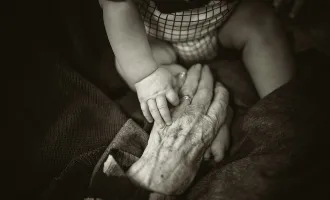UCaSeFiles: Low Back Pain. Doc, Make It Step Off!
Welcome to UCaSeFiles, a weekly column in which short case vignettes are submitted by UCSF medical students, residents and attendings based on the stories of real patients seen on the wards, with each vignette followed by a brief discussion of salient learning points. Some cases are rare diagnoses; others are common ailments that might have had a unique or puzzling presentation. All are welcome to submit your medical mysteries to Theresa Poulos (Theresa.poulos@ucsf.edu) for editing and final submission.
Column Editors: Theresa Poulos (4th year UCSF medical student) and Jenny Cohen, M.D. (R2 – UCSF Internal Medicine)
Low Back Pain: Doc, Make It Step Off!
Case Submitted by Theresa Poulos, MS4
The Patient: A 25-year old G1P1 woman presented to primary care clinic with chronic back pain that had worsened in the past 18 months since she gave birth. Growing up, she had hopes of becoming a dancer and practiced diligently until she began having back pain in her teens that kept her from rehearsal. The pain was tolerable until she became pregnant, when she spent weeks in bed because of sharp lower back pain that radiated bilaterally down her legs. Since delivery, she has continued to have similar pain, so severe that she needs to break from activities. She notes that twisting motions are particularly aggravating, as is lifting her child. She also finds that the pain is almost intolerable when she has sex with her husband. X-ray imagery confirmed the diagnosis.
The Diagnosis: Spondylolisthesis is an anterior or posterior displacement of a vertebra or the vertebral column in relation to the vertebra below. It often results from a spondylosis (a defect or fracture of the vertebral arch) earlier in life. Because of the structural damage to the vertebral arch, on x-ray spondylolisthesis looks like a “step-off” of the vertebra. Severity of disease is graded by analysis of the extent of the observed “step-off,” or how much misalignment is seen.
Spondylolisthesis is 4-6 times more common in women than men, and is thought to be related to estrogen’s loosening effects on ligaments. Like our patient who was training as a dancer, young teenage girls who participate in sports such as gymnastics and cheerleading are at higher risk for spondylolisthesis because of the combination of hormonal shifts and physical demands on the spine. Additional problems related to spondylolisthesis are often seen during pregnancy as a result of loosening ligaments and changes in pelvic structure.
This patient was diagnosed with a low-grade (<50 percent slip) isthmic spondylolisthesis. Initial treatment plan is conservative, with recommendations for physical therapy and spine strengthening exercises that target the deep spine stabilizers, as well as NSAIDs to help control the pain. She was also counseled on sexual positions that might be less painful for her. If symptoms are still intolerable after 6-12 months of conservative therapy, she may consider a surgical decompression and fusion.


